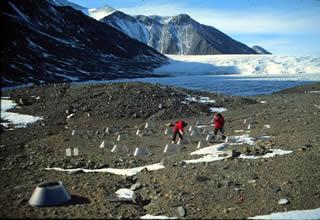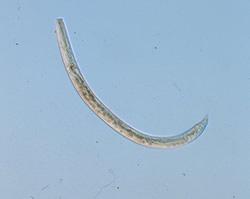

The Dry Valley soils account for the majority of the valley surface area. Although the soils are up to five million years old, profiles are generally poorly developed. Despite a general appearance of uniformity, Antarctic soils have a high degree of spatial and temporal heterogeneity in soil properties, hydrologic regimes, and biological composition, which we are relating to the general biological productivity of the dry valleys. The primary research goal is to understand the ecosystem processes controlling the distribution, abundance, and activity of soil biota and associated ecosystem processes. Globally, there are no other soil systems where nematodes represent the top of the food chain and where food webs have such simple structure. The majority of soils sampled across the valleys (65%) support up to three invertebrate taxa (tardigrades, rotifers, nematodes), but in contrast to other ecosystems, many soils lack invertebrates. Despite their trophic dominance, the species diversity of nematodes in dry valley soils is very low (n=3), representing only 2 functional levels (predator and microbivore) compared to 5 functional groups more common in other systems (e.g., JRN, SEV, SGS, and BNZ LTERs). The simple food chains found in dry valley soils, which have been resolved at the species-level, appear to be strongly influenced by human disturbance. A long-term soil manipulation experiment shows that soil warming and increased moisture and carbon availabilities have a major effect on the nematode community, decreasing the abundance of the omnivore-predator species and increasing the abundance of a microbivorous species as well as affecting soil respiration.
